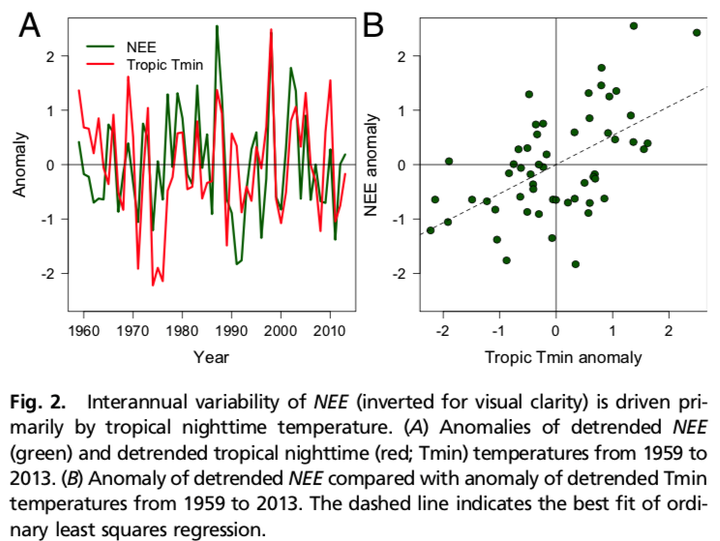Tropical nighttime warming as a dominant driver of variability in the terrestrial carbon sink

Abstract
The terrestrial biosphere is currently a strong carbon (C) sink but may switch to a source in the 21st century as climate-driven losses exceed CO2-driven C gains, thereby accelerating global warming. Although it has long been recognized that tropical climate plays a critical role in regulating interannual climate variability, the causal link between changes in temperature and precipitation and terrestrial processes remains uncertain. Here, we combine atmospheric mass balance, remote sensing-modeled datasets of vegetation C uptake, and climate datasets to characterize the temporal variability of the terrestrial C sink and determine the dominant climate drivers of this variability. We show that the interannual variability of global land C sink has grown by 50–100% over the past 50 y. We further find that interannual land C sink variability is most strongly linked to tropical nighttime warming, likely through respiration. This apparent sensitivity of respiration to nighttime temperatures, which are projected to increase faster than global average temperatures, suggests that C stored in tropical forests may be vulnerable to future warming.